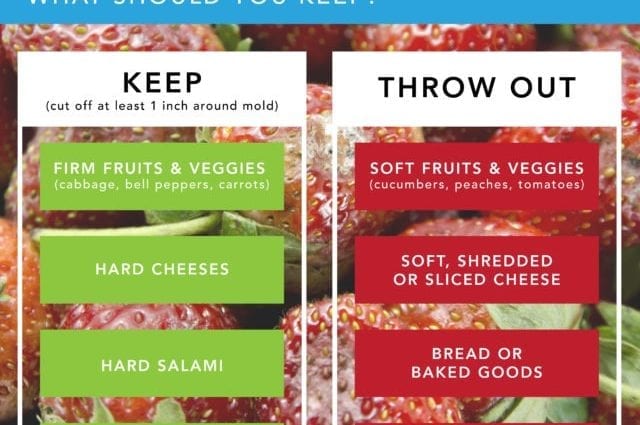Mold on food does not appear by accident – at a certain temperature, humidity and other factors favorable for the growth of fungi. Moldy food is mostly harmful to your health, but there are exceptions. On some foods, mold can be removed and refined food can be safely eaten.
The visible part of the mold does not always mean that only the surface of the product is affected. Fungal spores penetrate deep into food, especially in porous structures such as bread. Moldy canned food, jams, fruits, dairy products, boiled sausages are also unsuitable for consumption – you can immediately send them to the trash bin.
If the structure of the product is dense, then there is a chance to save its taste and quality.
- Hard cheeses
If mold appears on the surface of a cheese that is dense in structure, it is highly likely that the defeat has affected only its outer part. Cut off the areas with the fungus 2-3 centimeters below them, without touching the spores with the knife, so as not to transfer them to other areas of the cheese. Wrap the cheese in plastic wrap and refrigerate to continue eating it as needed.
- Dried sausage and jerky
A sign of mold on these products is the appearance of a white coating on the outside. Some types of sausages are specially coated with noble mold, which gives them a specific flavor. You can remove plaque with a damp cloth dipped in vegetable oil. If the product is sticky to the touch and the mold has gray or green shades, it is better to refuse to use it altogether.
- Soft cheeses with mold
For the preparation of a certain group of soft cheeses, mold is specially used that is safe for the human body. The taste of such cheeses is unique, and the product itself is even healthy. But the presence of mold on the cheese should be indicated on the packaging. But if another mold appears on such a product, then due to the structure of the soft cheese, it will be infected inside. It is strictly forbidden to eat such cheese.
- Solid vegetables and fruits
Cabbage, carrots, bell peppers and other hard vegetables or even fruits can become moldy if not stored properly. But due to their density, these products do not let fungi inside, so they can be consumed after getting rid of the mold. As with hard cheeses, simply cut off the affected areas gently with a knife.










